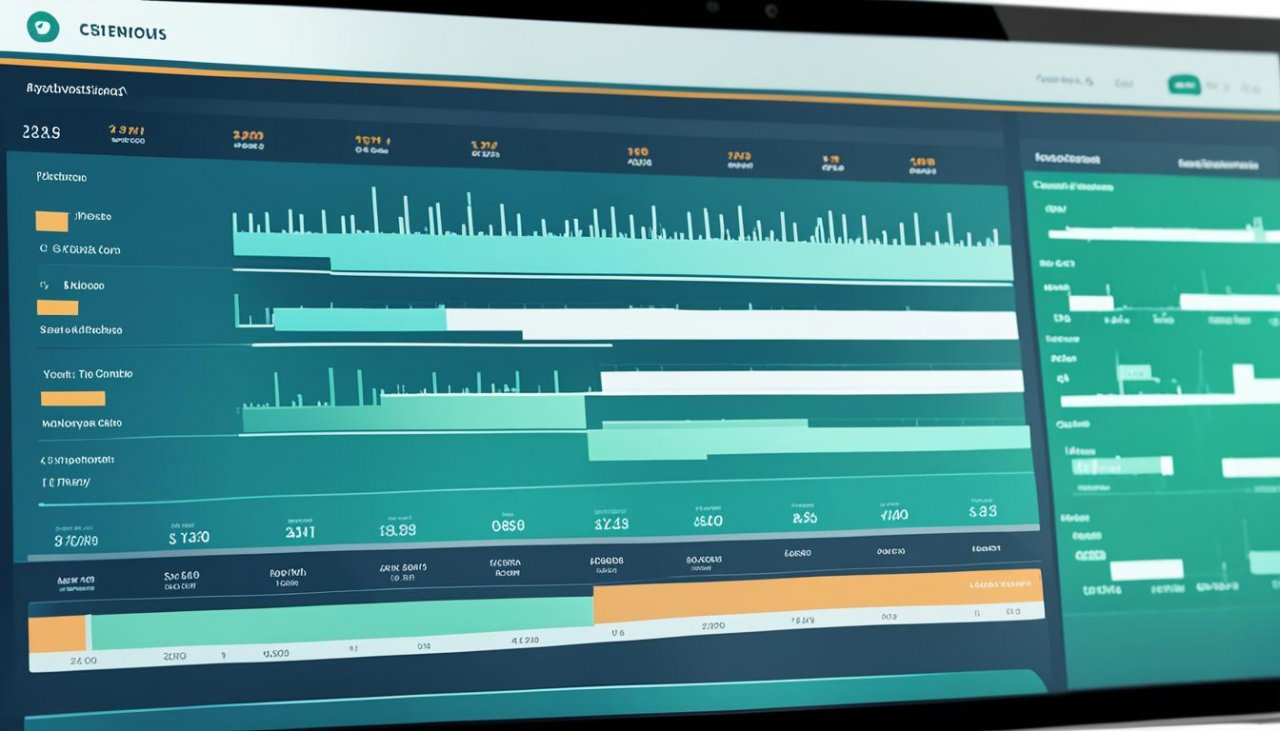As a field service manager, finding ways to improve has always been my goal. One memory that really hit home was when a technician went to a job site unprepared. This happened due to a mistake in the scheduling. It was not only bad for the technician but also frustrating for our client. This made me realize we had to do better to avoid such situations.
Thankfully, technology has evolved, changing the game for field service. Things like mobility, the Internet of Things (IoT), and GPS are leading the way for the future. Now, we can manage our field staff better and help them do their jobs more effectively than ever.
Picture this: technicians checking their schedules, updating their progress, and accessing what they need, all on their phones. This mobile set-up boosts how well everyone communicates and works together. Technicians can get updates in real-time and have info ready at hand.
Moreover, IoT has, without a doubt, transformed our software. It lets us use gadgets, like wearables, to automate some tasks, watch how everyone is doing, and get data for insights. Thanks to IoT, we can plan ahead with maintenance, spot possible issues, and fix them before they become big problems.
Looking towards 2025, the path for field staff management software is bright. With all these steps forward, businesses are going to benefit in big ways. By using what mobility, IoT, and GPS tech offer, companies will get better, offer great service, and make more money. They will be leaders in the field service world.

Key Takeaways:
- The integration of mobile technology in field staff management software enhances communication and coordination, enabling real-time updates and access to necessary resources.
- Internet of Things (IoT) integration automates processes, improves tracking and monitoring, and enables proactive maintenance to prevent equipment failures.
- Advancements in GPS technology provide accurate location tracking and optimize route planning for field staff, resulting in improved efficiency and cost savings.
- Mobility, IoT, and GPS technology together drive the progress of field staff management software, maximizing performance and enhancing management capabilities.
- The future of field staff management software holds the promise of improved efficiency, enhanced customer experiences, and increased profitability.
The Impact of Predictive Maintenance on Field Service Management
Predictive maintenance is changing how field service companies work. Thanks to IoT and AI, these firms can stop machine problems before they start. This strategy not only cuts downtime and repair bills but also makes customers happier.
Using data from sensors and smart algorithms, businesses spot early signs of trouble. This high-tech way to predict issues lets technicians fix things before they fail. This keeps operations smooth and avoids costly stops.
One big plus of predictive maintenance is that it boosts safety. It helps companies find and fix risks early, protecting people and keeping accidents at bay. Being proactive like this also makes firms look more reliable, building trust.
Also, predictive maintenance makes field work more efficient. By stopping sudden breakdowns, workers can focus better. This helps them use their time wisely and deal with the most important tasks. Workflows become smoother, resources are used well, and teams become more productive.
The use of predictive maintenance in field service boosts customer happiness. It means less equipment trouble, so services run smoothly. This keeps clients happy, bringing more business and good reviews. In the end, it grows the company.
Furthermore, predictive maintenance changes companies’ maintenance style from waiting to acting first. Instead of waiting for a fault, they act thanks to data insights. This early action saves time and money, and it stops small issues from becoming big problems.
All in all, predictive maintenance is a game-changer for field service management. With IoT and AI, companies can avoid and fix machine problems well. This makes them more efficient, safer, and better at pleasing customers. Using predictive maintenance puts them ahead in the competitive field service sector.
The Rise of Cashless Transactions in Field Service
Cashless transactions are getting more common in the digital age we live in. Field service companies are changing to digital payments. They’re doing this to keep up with what their customers want. The main reasons behind this switch are how easy and safe mobile payments are. They let people pay with their phones or other gadgets.
Thanks to mobile payments, you can leave your cash and cards at home. This makes buying services or products from field technicians easy and quick. It makes the whole process smooth for everyone involved.
Service businesses are setting up ways to take mobile payments online or through other apps. This move helps them reach more customers. It also gives people more ways to pay.
Using digital payments has many advantages for field service firms. For one, it makes everything run smoother. There’s less time spent on handling money or cards. This means technicians can focus on their work. They don’t have to worry about payment details.
Cashless payments also make customers happier. People who like using technology will appreciate the option to pay digitally. It’s a convenient way to handle payments.
Also, digital payments are safer than handling cash or using cards. The special tech used in mobile payments keeps financial details safe. This builds trust with customers and lowers the chance of fraud.
Overall, digital payments are changing the field service world for the better. They make payments easier and safer for everyone. Choosing digital ways to pay not only makes business smoother. It also fits with the trend of being more digital in our daily lives.
Augmented Reality (AR) and Virtual Reality (VR) for Remote Collaboration
There’s a big change happening in the field service industry thanks to Augmented Reality (AR) and Virtual Reality (VR). These new technologies are making remote teamwork and help much better. Now, field technicians can see and understand problems before they even get to the client.
They do this with AR and VR tools. These tools can show digital data like instructions right on the real world. This allows technicians to solve issues from afar, saving time and making their work more efficient.
AR can put digital pictures or even holograms right on objects. This helps technicians with complicated tasks, showing them through each step. They can point out exactly what needs to be checked or fixed.
VR, on the other hand, offers a whole new experience. It puts technicians in a virtual world made by computers. Here, they can do practices, try new equipment, or work on repairs before the actual job. VR also helps with training, keeping technicians skilled while they are away.
The use of AR and VR in field service work will grow. More companies will see how these technologies can improve how they work, their visits to sites, and how well they serve clients. AR and VR are keys to better teamwork, less site visits, and smarter work, all while offering great service.

Revolutionizing Field Service Collaboration
AR and VR are turning field service teamwork around. They bring real-time data, better talks, and solutions to complex problems. Technicians and experts can now work together, even when far apart, on tricky repairs or diagnostics.
These technologies also make teaching and learning better. Expert advice can now be shown and shared with new technicians. This boosts their skills and helps them avoid mistakes.
Training is also much more hands-on with AR and VR. Technicians can practice in virtual worlds, gaining real-life skills without being near the actual equipment. This is a big step in making sure technicians are well-prepared for any job.
As AR and VR get better and easier to use, field service companies will see even more benefits. These tools can smooth out how they work, make teamwork better, and bring a top-notch experience to their customers.
Dynamic Dispatch and Scheduling for Improved Productivity
Dynamic dispatch and scheduling are key for field service companies to work better. They use real-time data and telematics to manage technician schedules. This leads to more work done and less time wasted.
These solutions make it easier for companies to schedule work. They also help fix things right the first time and run more smoothly.
Thanks to software, technicians and customer calls are matched well. This ensures prompt service by using smart algorithms. It also reduces how much time is spent on the road.
By planning the best routes, companies save money and help the environment. They cut down on fuel use and reduce their carbon footprint.
These tools let companies see what’s happening right away. So, they can quickly deal with new or urgent tasks without upsetting their service. If something important comes up, the system makes sure it’s handled smoothly with little hassle for the customer.
The software also gives in-depth reports and insights. These help improve how work is done and make customers happier. With the right info, companies can keep getting better, streamline their work, and keep customers satisfied.
Choosing dynamic solutions is a must for field service companies. It helps them do their work better, be more efficient, and wow their customers.
Enhancing Resource Utilization
Dynamic solutions let companies use what they have in the best way possible. They look at where technicians are, what they’re good at, and how much they have to do. Then, tasks are given to the right people, making work more efficient.
The process is automatic, which means less mistakes and the ability to react fast to new situations. This way, the tools ensure resources are well-used, helping everything run smoothly.
In the end, using these solutions is vital for field services to be their best. With the power of real-time info and automation, they run better. This makes for happier customers, more efficient technicians, and a stronger business.
Performance Management Tools for Enhanced Field Service Evaluation
Field service management relies on evaluating workers, procedures, and tools. Doing this ensures everything runs smoothly and customer service shines. Performance management tools are key in this area.
These tools focus on specific performance indicators. They help understand how well field operations are doing. This analysis highlights ways to improve, better allocate resources, and boost overall performance.
One major KPI is how happy customers are. Their feedback shows how good the service is. This information allows companies to adjust and meet or beat customer wants. It also builds loyalty and increases return customers.
Another important indicator is MTTR, which looks at how long it takes to fix something. Lowering this time is crucial. It means less waiting for customers, happier clients, and a more efficient company.
The field technician utilization rate is another vital metric. It shows how well workers are used. By improving this, a business makes sure its workforce is as efficient as possible. This avoids too much or too little work for employees and boosts productivity.
With a rising need for field service performance management, the market for these tools is growing. Companies see their worth in achieving better operations and making customers happy.
See below to understand how important performance management tools are in field service:
Chart: Importance of Performance Management Tools
The chart above shows how performance management tools provide crucial insights. They help businesses make smarter choices and improve their services. This leads to higher efficiency across the board.
By using these tools and aiming for betterment, field service businesses can set new performance benchmarks. They can then exceed customer expectations, staying competitive in the field service industry.
Embracing Technology Integration for Operational Efficiency
Field service companies must keep up with changing tech to work better. It’s important to pick software that fits with what you already use. And it should work with your tools and equipment too.
Getting new tech to work well means having a good plan. You need to train your team and make sure everyone knows why the change is happening. This helps everyone adjust without problems.
If you want your company’s needs to be met, choose flexible software. It should be able to change with the times. This way, your company can smoothly use new tools as the tech world grows.
Don’t forget, the software needs to work with the tools you already have. This makes everything work together without issues.

By choosing the right technology and making sure it all works together, companies can get more done. They can run smoother and be more productive. By keeping up with new tech, they won’t fall behind and can be successful in the future.
Strategic Decision-Making and Future Preparedness
Today, the field service industry is changing fast. Companies need to make smart choices to face the future well. They should look ahead, seeing how tech changes and what customers want. This way, they can set themselves up for success.
Being strategic means looking at what’s happening now and finding ways to grow and get better. It’s about doing your homework, following new trends, and keeping up with what’s new.
Another important part of getting ready for the future is investing in new tech. Companies should look for new tools that can make their work better. This means making smart choices about where to put their money.
But it’s not just about tech. Employees also need to learn new things to keep up with the industry. By training them, companies make sure their people can still meet customer needs as they change.
Companies that are open to change do well. They make choices that look to tomorrow. This keeps them in front of the pack and lets them give great service to their customers.
Future-Proofing Through Technological Integration
Using tech smartly is key for the future. Companies need to pick software that works well with what they already have. This makes things run smoother and helps everyone work better.
Choosing the right software matters. It should be able to change as the business does. This way, a company can keep up with what’s new and keep doing well.
Also, working with other tech companies can be a big plus. If a company teams up with others who have good ideas, they can do even better. This teamwork can open doors to new ways of growing.
Making good choices and getting ready for what’s coming takes looking at the big picture. Companies should think about how their choices impact everyone they work with.
Taking a lead in the field service industry will take effort. But by being ready to change and making good choices, companies can stand out. They can lead the way in an industry that’s always moving forward.
The Role of Digital Twins in Field Service Management
New technology is changing field service management. AI, ML, and IoT have introduced digital twins. These are exact digital copies of real things. They help companies figure out how their decisions affect their products and processes.
Digital twins let businesses run different tests virtually. They can then make smarter decisions using real-time info. This tech is great for making products better, running business easier, and improving maintenance plans.
The role of digital twins in managing services is becoming huge. Experts say the use of this tech will grow a lot in the next few years. It’s clear that many different businesses are seeing its value.
Enhancing Product Design
Digital twins play a big role in making products better. A digital copy of a thing can be tested in many ways. This way, problems can be fixed early, saving money and making things of higher quality.
With AI and IoT, digital twins can also look at how products are used. This info shows where things can be made better. It helps make customers happier and more loyal.
Optimizing Business Processes
Digital twins aren’t just for products; they also help improve how companies work. By making digital versions of their way of working, companies can spot what slows them down. They can then work on making things run smoother and cheaper.
This collected data helps companies make choices based on facts. It helps make work flow better and use resources smarter. This makes businesses run better and keeps customers happy.
Empowering Maintenance Operations
Maintenance is another area where digital twins are very useful. They create a way to watch real stuff in real-time. This means companies can fix stuff before it breaks, cutting down on times things are shut and fixing things before they turn big problems.
By using AI and IoT, digital twins can “feel” when something might go wrong. They help plan when to do maintenance work, keep the right parts in stock, and make sure important stuff is always ready to work.
Conclusion
The future of field service management software is bright. It’s being pushed forward by better mobile tech, the Internet of Things (IoT), and smart maintenance. As companies digitize, they need to make smart choices and be ready for what’s next. They should adopt new tech and lead the way. This will help them do better in managing their field services.
More mobile tech and IoT are making field service companies do better and be more efficient. Now, they can check their equipment before it breaks using AI and IoT. This cuts down on downtime and makes customers happier. Also, using digital money and AR/VR make work easier away from the office.
Organizations have to keep up with new tech and look into new ways to invest. They should pick software that fits their needs and goes well with different devices. It’s essential for everything to work smoothly. With modern tools like digital twins and by training their teams, companies can do great in the future of field service management.
See how FieldAx can transform your Field Operations.
Try it today! Book Demo
You are one click away from your customized FieldAx Demo!
FAQ
What are the trends in field staff management software?
The trends in managing staff in the field are evolving fast. These include using mobile devices, connecting to the internet of things (IoT), and making better predictions to avoid equipment problems. Also, they involve moving towards cashless payments, using AR and VR for team meetings from far away, and planning on-the-go with flexible scheduling. There’s also a focus on tracking worker’s performance, blending different technologies, making intelligent decisions, and the concept of digital twins.
How does predictive maintenance impact field service management?
Using IoT and AI for predictive maintenance can stop machines from breaking down before it happens. These systems look at data from sensors to find patterns. They help cut repair costs, reduce times when machines are not working, and keep customers happy.
What is the rise of cashless transactions in field service?
More and more, field service is moving away from using cash. Instead, they’re turning to digital ways to pay like mobile apps. This change is happening to please customers, as it makes business smoother. It also means less need to handle cash or cards.
How are AR and VR technologies used in field service?
AR and VR are changing how field service works, by making remote teamwork better. They let techs see and solve problems before going to the customer’s place, making things faster and more efficient. In the future, we’ll likely see more of these high-tech solutions in service management.
What is the role of dynamic dispatch and scheduling in field service?
Dynamic dispatch and scheduling are key for using worker’s time and resources well. They’re powered by real-time information and telematics, which improve tracking and managing technician’s schedules. This leads to getting more done the first time, cutting down on waiting, and boosting how well everything runs.
How do performance management tools enhance field service evaluation?
These tools check how well field service staff, their jobs, and tools are doing. They use numbers like how happy customers are, how long it takes to fix things, and how much techs are being used properly. By looking at these numbers, companies can get a better handle on what’s working and make things better.
What should organizations consider for seamless technology integration?
Choosing technology that fits with what’s already being used is a must. Preparation is also vital for changes to go well. Picking software that can be changed to meet different needs and stay current with tech advances is important too.
How can organizations prepare for the future of field service management?
To get ready for what’s next, companies need to be forward-thinking and ready to embrace new tech and changing customer wants. It’s smart to look into new investments and focus on training staff. By keeping up with the latest in technology, they’ll be set up for success in the field service world.
What is the role of digital twins in field service management?
Digital twins are changing how field service is managed by using AI, ML, and IoT. They create a digital copy of things like machines, so companies can see how they respond before making changes in the real world. This method is big in designing products, making businesses work better, and keeping things running smoothly.
Author Bio
Co-Founder & CMO at Merfantz Technologies Pvt Ltd | Marketing Manager for FieldAx Field Service Software | Salesforce All-Star Ranger and Community Contributor | Salesforce Content Creation for Knowledge Sharing






